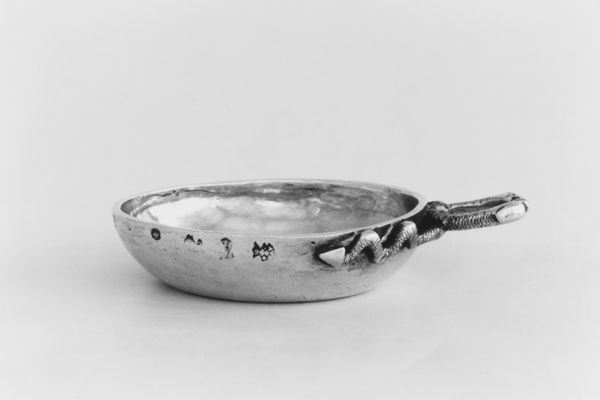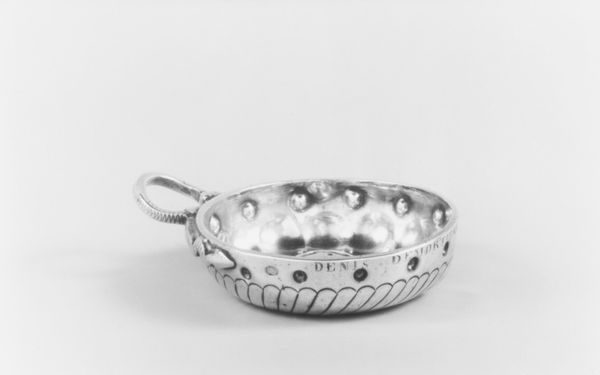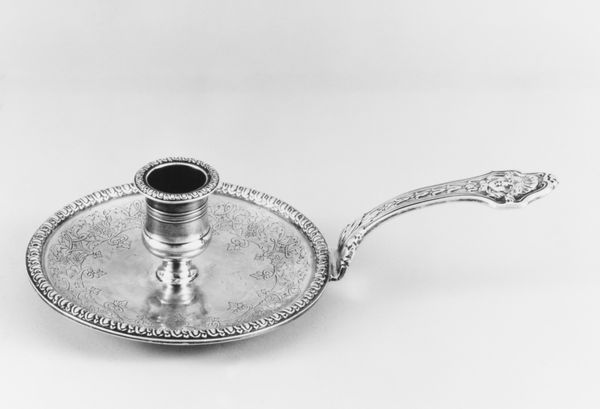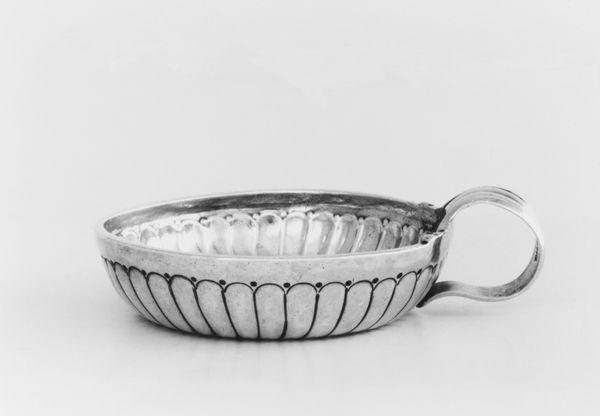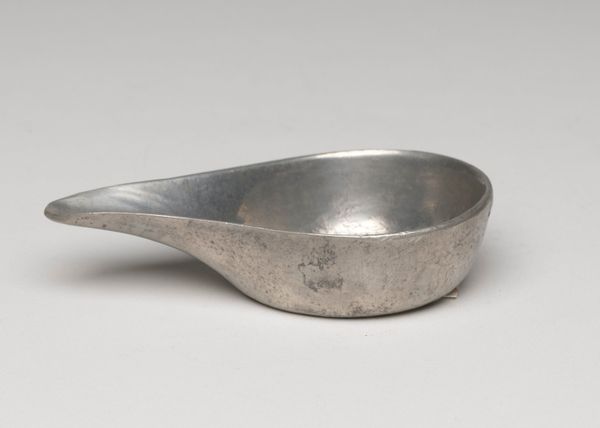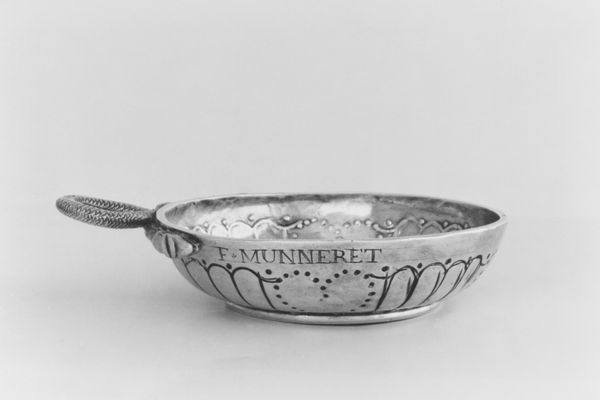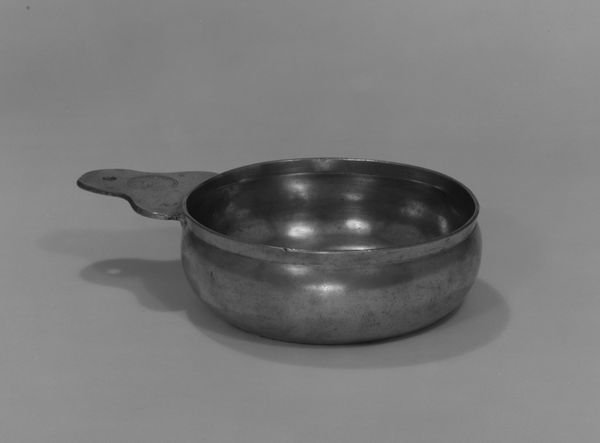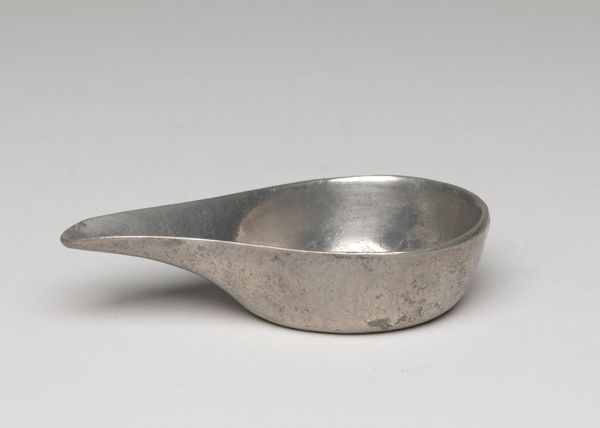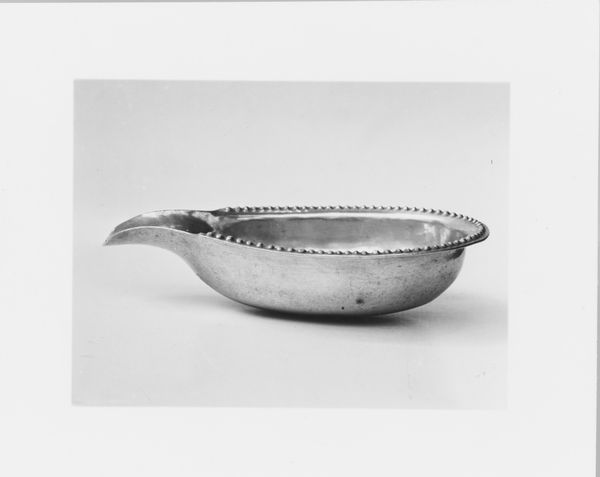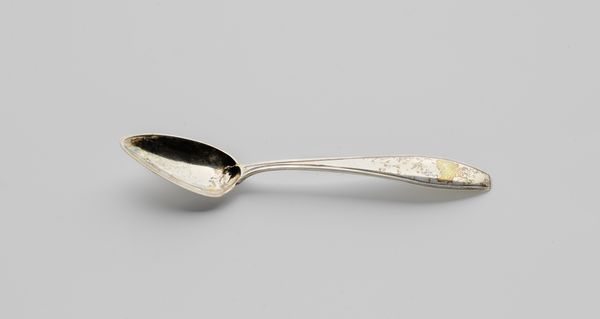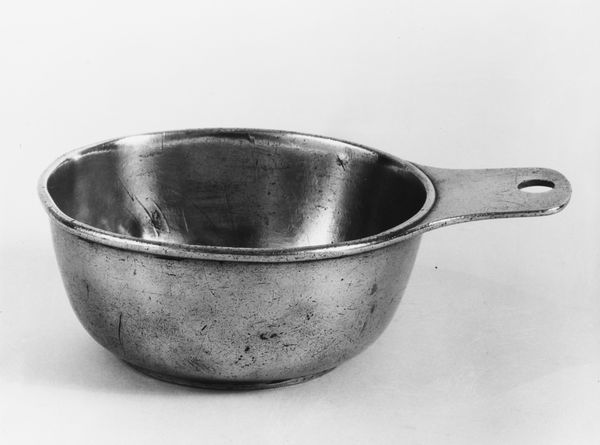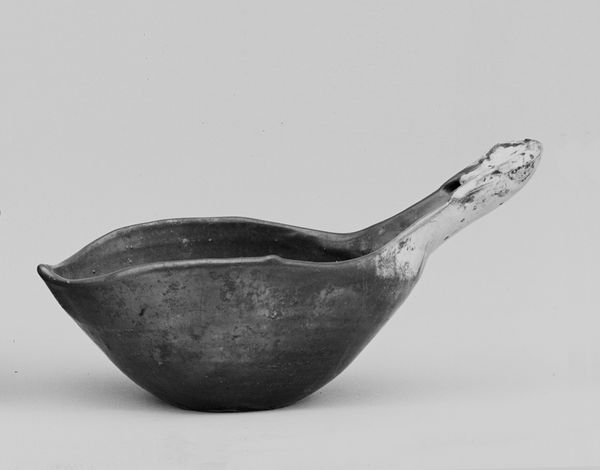
Dimensions: Overall: 1 × 4 in. (2.5 × 10.2 cm)
Copyright: Public Domain
This wine taster was made in France by A.L. sometime between 1750 and 1850 out of silver. Note the craftsmanship evident in its hammered form, the delicate handle cast with classical motifs, and the pierced bowl with precise drainage holes. But the real story here is about value and labor. Silver, a precious metal, signifies wealth, while the decoration adds a bespoke, personal touch. The wine taster wasn't just a tool; it was a status symbol. Think of the specialized skills required: the silversmith's mastery of shaping and joining, the engraver's steady hand. Each stage represents hours of labor, a concentrated effort to transform raw material into a refined object. This piece encapsulates the social hierarchies of its time, where craftsmanship and luxury intertwined to reinforce class distinctions. By understanding the materials and making processes, we see how everyday objects like this wine taster transcend mere functionality, reflecting the intricate relationship between art, craft, and society.
Comments
No comments
Be the first to comment and join the conversation on the ultimate creative platform.
